The content of the article
Many of us do not attach much importance to a runny nose, believing that it will pass in a week, regardless of treatment. However, sometimes a runny nose develops into a complication called sinusitis. This is a serious bacterial disease that greatly affects the quality of life. Sinusitis is an inflammation of the maxillary sinuses located on both sides of the nose. Normally, these sinuses are connected to the nasal passages by narrow alkalis. In the sinuses, the air warms up, which subsequently enters the lungs. The maxillary sinuses participate in the formation of the voice, they perform many necessary functions.
With sinusitis, the sinus mucosa becomes inflamed, red, painful, mucus forms inside the sinus. In order to cure sinusitis, you need to act in a complex way - along with taking antibiotics and other groups of drugs, you need to do a rinse. This is a local effect on the sinus mucosa, which allows you to get rid of bacterial mucus and relieve inflammation. In this article we will talk about washing - how to do it, and most importantly, which solutions to choose for this. But first, let's try to figure out the diagnosis - how and why sinusitis occurs, what are its main symptoms.
Causes and symptoms of sinusitis
Sinusitis is considered one of the most common pathologies of ENT organs. The diagnosis is often made to children, sinusitis often affects adults, but it rarely occurs in older people. Sinusitis is often caused by improper or inadequate treatment of acute respiratory viral infections, especially in young children. As a rule, babies of the first years of life do not know how to blow their nose, but it is necessary to clear the nose of mucus. In these cases, an aspirator should be used that gently but effectively pumps mucus out of the sinuses. If this is not done, the bacterial mucus stagnates, this becomes the cause of the development and further spread of the infection. Sinusitis appears with frequent diseases and reduced immunity. Sometimes the cause of the development of sinusitis can be an allergy, when the mucous membrane of the sinuses and nasal passage swells from exposure to an allergen, it becomes loose. In this condition, the mucosa is more susceptible to external infections. In this case, the body can not cope with the bacteria, any harmful microbe leads to serious inflammation. Another reason for the development of sinusitis is the presence in the oral cavity and nose of sources of chronic infection. These include caries, tonsillitis and pharyngitis, enlarged adenoids, etc. Knowing the causes of sinusitis, you can prevent the development of this disease. But how to recognize him in time?
Symptoms of sinusitis are very diverse. First of all, it is, of course, mucus from the nose. As a rule, with a viral cold, mucus has a transparent color, it is more liquid, almost like water. If the viral nature of the disease turned into a bacterial one, then the mucus acquires a green or yellow hue, becomes more dense, opaque. In addition, the nose with sinusitis can be completely or partially blocked, nasal breathing is impaired. Along with this, sinusitis brings the patient weakness, headache, and often high fever. With severe inflammatory processes, the sinuses themselves can hurt during palpation, often the pain increases with the head tilted forward. This is due to the rush of bacterial mucus to the inflamed sinus walls. The general condition of the patient also worsens - he feels unwell, weak, his face and eyes may swell, the symptoms do not go away with the classic treatment of SARS.In this case, you must definitely see a doctor - an otolaryngologist. If he confirms the diagnosis of sinusitis, then washing is one of the most effective and effective therapeutic measures.
How to rinse your nose with sinusitis
Imagine that a sinus is a small cave that is lined with mucous walls. With sinusitis, these walls become swollen, red, inflamed. Bacterial mucus is constantly released from the walls, like from a sponge - this is the result of the fight of lymphocytes with the infection. Mucus fills the sinus, blocks the exit, which is the cause of nasal congestion, pain. To alleviate the condition of the patient, you need to get rid of this mucus. If simple blowouts do not help, the mucus should be washed with water or a special liquid. Rinsing not only removes the mucus, but also processes the walls of the mucosa to kill bacteria and prevent the release of new mucus. Of course, one rinse for a full recovery is not enough, but 4-8 regular procedures will help you get rid of sinusitis completely. The most important thing in washing is to correctly choose a solution. After all, the intensity of therapy depends on it.
- Sea water, saline, salt water. These are the simplest and safest solutions that are usually used to wash the nose of a baby. They are used not only for sinusitis, but also for colds, even when the mucous membrane dries, when the air in the room is dry and hot. Ready-made marine compounds are in the pharmacy - Aqualor, Dolphin, Aquamaris, etc. To wash their nose with them is very convenient, because they are presented in the form of sprays. You can just buy an ampoule of sodium chlorine - saline solution, rinse the baby's nose with this compound. In fact, sodium chlorine is a pure salted water that you can prepare yourself at home. To do this, simply dissolve the salt on the tip of the knife in a glass of warm water - the rinse solution is ready. This tool is used for sinusitis to wash the nose of allergy sufferers, because they may have a reaction to some drugs.
- Antiseptics. These are simple, but effective antimicrobial and antiseptic agents that will help get rid of sinusitis in a few procedures. The simplest and most affordable medicine is furatsilin. The tablet should be crushed, pour boiling water, allow to cool and rinse the nose with a yellow solution. In water, you can also dissolve a few drops of iodine or a spoonful of hydrogen peroxide. To prepare the solution, Chlorhexidine, Dioxidine, Miramistin are also used.
- Antibiotics. This is a more powerful and powerful group of drugs, which is used only by prescription, if the classic treatment does not help. In this case, antibiotics are added to the solution with warm water, however, you should first know the sensitivity of the patient's body to a specific drug in this group.
- Antihistamines and hormones. With severe nasal congestion, as well as in the case of sinusitis caused by allergies, hormonal solutions or antihistamines are added to the wash water. They help relieve swelling and open nasal breathing.
- Decoctions of herbs. At home, even before the appointment of a doctor, you can rinse your nose with decoctions of herbs. They perfectly relieve the symptoms of sinusitis, relieve the patient’s condition, and besides, they are absolutely safe. To prepare a decoction, pour dried or fresh plants in a jar, pour boiling water, cover, wrap and let it brew. After a couple of hours, strain, rinse the nose with a decoction in a warm form. Use chamomile to prepare the solution - it perfectly relieves swelling and inflammation. Calendula has an antibacterial effect, oak bark will stop the flow of mucus, sage will produce an anti-inflammatory effect.
If you are washing your nose for the first time with an unfamiliar solution (especially antibiotics), prepare a weak concentration of the composition to observe the reaction of the body.
How to rinse your nose with sinusitis
In order for the procedure to bring real benefits, washing should be done correctly. Here are some ways to rinse your nose with a detailed description of the algorithm of action.
- Pipette. This method is suitable for children, especially toddlers of the first months of life. Of course, aggressive washing methods can be dangerous - this can lead to mucosal injury, to the ingress of water into the Eustachian tube. Therefore, such nibbles are washed with a pipette - first, 1-2 drops of a solution or salt water are dripped into each nostril, and then, if necessary, the liquefied mucus is aspirated. Older children (after two years) can be instilled with a solution in their nose not with a pipette, but with a syringe without a needle, so that a larger volume of the medicinal composition gets into the sinuses.
- Teapot. This is the most famous and truly effective way to rinse your nose. For the procedure, you will need a special kettle, in some cases it can be presented in the form of a horn. If there is no such device, take a regular small teapot. Pour the selected medicinal solution into it, bring it to one nostril. Slowly turn your head to one side until the water begins to flow into one nostril, and pour out from the other nostril. If the nose is clogged, 5-10 minutes before the start of the procedure, vasoconstrictor drops can be instilled into the nose, which will remove the swelling of the mucous membrane and help to rinse the sinuses with high quality. Thus, you need to flush both nostrils.
- Palms. Sometimes a person cannot rinse his nose with the help of a kettle, in this case, you can offer him to wash his sinuses with his hands. That is, collect the drug solution in the hand, close one nostril, and the second “suck” the liquid into the nose. This is a more gentle and safer way to rinse.
- Cuckoo. The most effective way to cleanse the nose is the washing procedure according to Proetz, popularly called “Cuckoo”. It is carried out in the ENT office. A special vacuum apparatus first sucks mucus from each nostril. After that, a special antibacterial fluid is poured into one nostril, which is sucked by the device from the second nostril. During the procedure, you need to say "Ku-ku", which is why the procedure took its name. When pronouncing this syllable, the larynx is positioned so that the fluid enters the sinuses, and not the throat and mouth. Rinsing according to Proets is a quick and effective disposal of sinusitis, the patient's condition improves literally after the first procedure.
Washing solutions should always be kept warm. There are several contraindications for this procedure. Firstly, the nose should not be washed in case of otitis media or damage to the eardrum. Secondly, the procedure is contraindicated for any nosebleeds. Thirdly, you can not do washing if there are injuries to the nose or septum that interfere with the natural passage of fluid. In any case, you must first go to the doctor, and only then rinse your nose with his permission.
How else to treat sinusitis
Many diseases can be cured only comprehensively, and sinusitis is no exception. In the struggle for a clean nose and well-being, you can use the following recommendations.
- Antibiotics. They are necessary in the fight against bacterial inflammation, without them, the disease can go into a chronic form.
- Vasoconstrictors. This group of sprays and drops is not only intended to relieve symptoms and improve quality of life. Vasoconstrictors are required for instillation before rinsing the nose, otherwise swelling of the mucous membrane will not allow the water to reach the sinuses.
- Medicinal drops and sprays. Therapeutic compounds must be applied to a clean and washed nose so that they do not get lost in the mucus, but get directly onto the walls of the mucosa and have a therapeutic effect. With sinusitis, such agents as Protorgol, Isofra, Albucid, etc. are very effective. If the nasal mucosa dries up from constant treatment, you can moisturize it with sea buckthorn oil.
- Inhalation. This is a wonderful procedure that allows you to treat sinuses with medicated steam. You can do inhalation over the basin, but it is much more effective to carry out the procedure using a nebulizer. This is a device that atomizes a drug solution to microscopic particles that the patient inhales. They settle directly on the inflamed mucosa, providing a direct local effect. For the nebulizer, you can use the same solutions as for washing the nose.
In difficult cases, when not a single remedy helps, the doctor may suggest a puncture. This is the same washing of the sinus mucosa with an antibiotic, but not only through the nose, but by injection, directly through a puncture on the face. Sometimes a puncture is needed for puncture to take mucus for analysis - bacteriological culture. This is necessary to identify the causative agent of the infection, as well as its sensitivity to various antibiotics.
In order to avoid the appearance of sinusitis in the future, it is necessary to strengthen immunity - move more, eat right, temper, avoid crowded places. It is necessary to adequately treat even a simple runny nose, do not start the disease and consult a doctor on time. Be sure to get rid of the foci of infection in the oral cavity - it is necessary to cure tooth decay, chronic tonsillitis and pharyngitis. Beware of hypothermia, keep your legs and head warm, and then no sinusitis is not scary to you!
Video: how to permanently forget about a runny nose and sinusitis

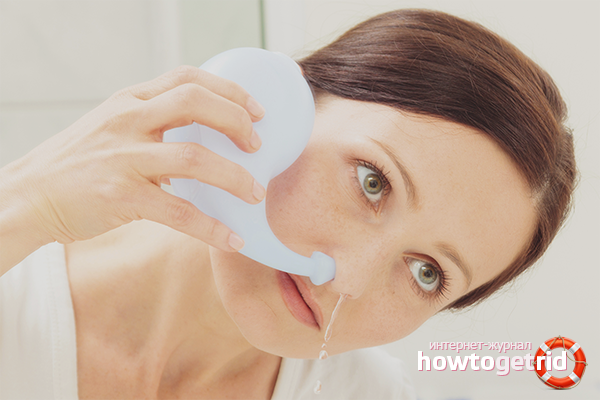
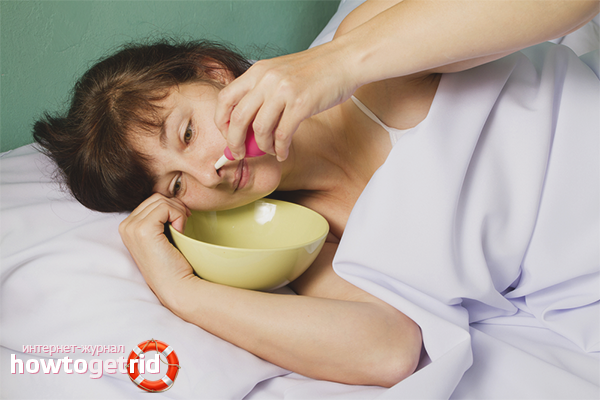
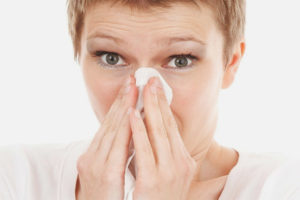


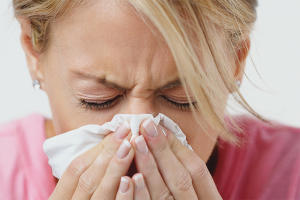
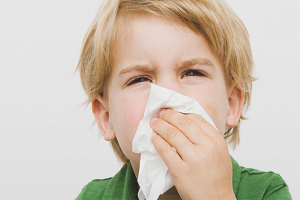

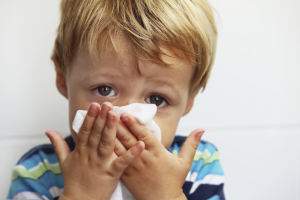
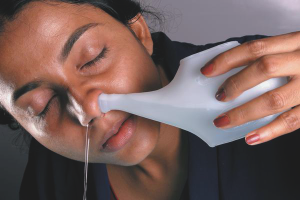
Submit